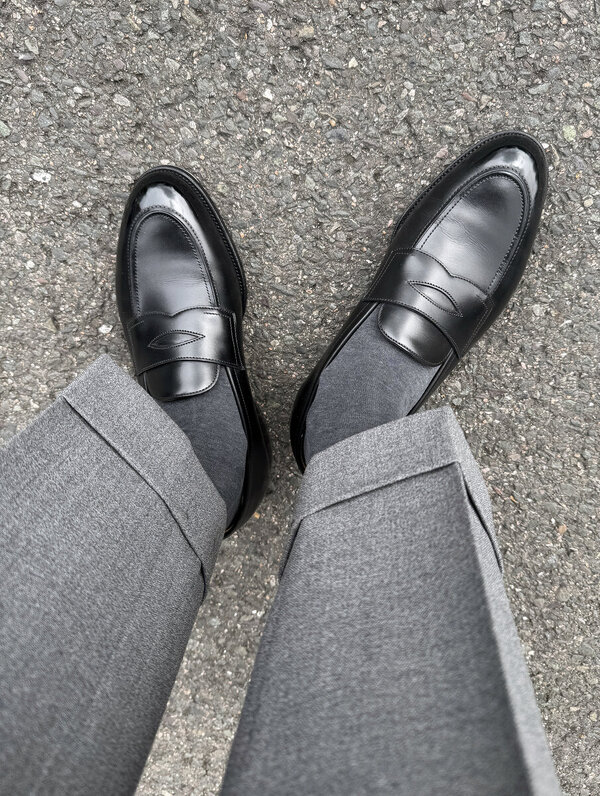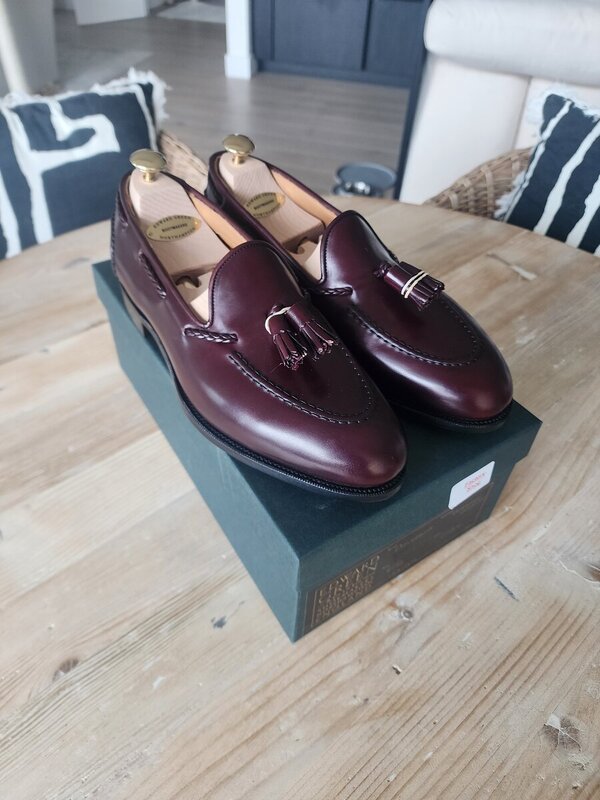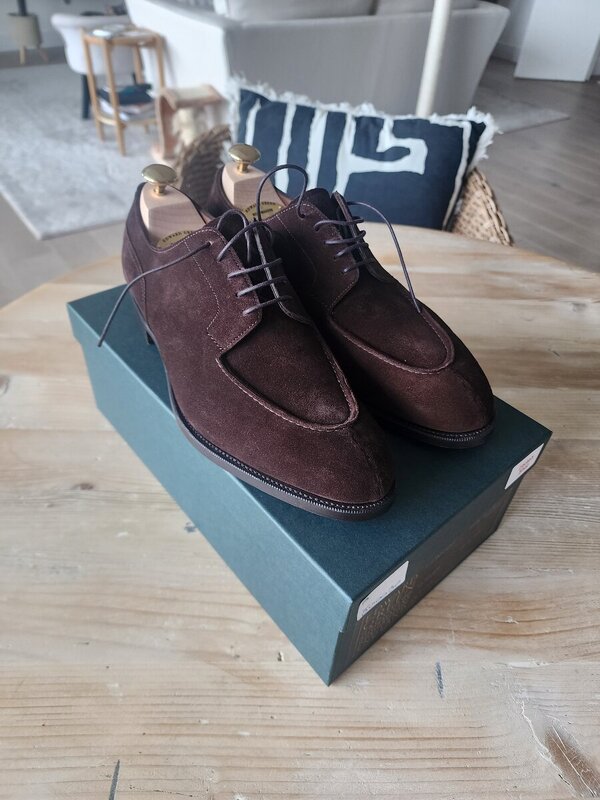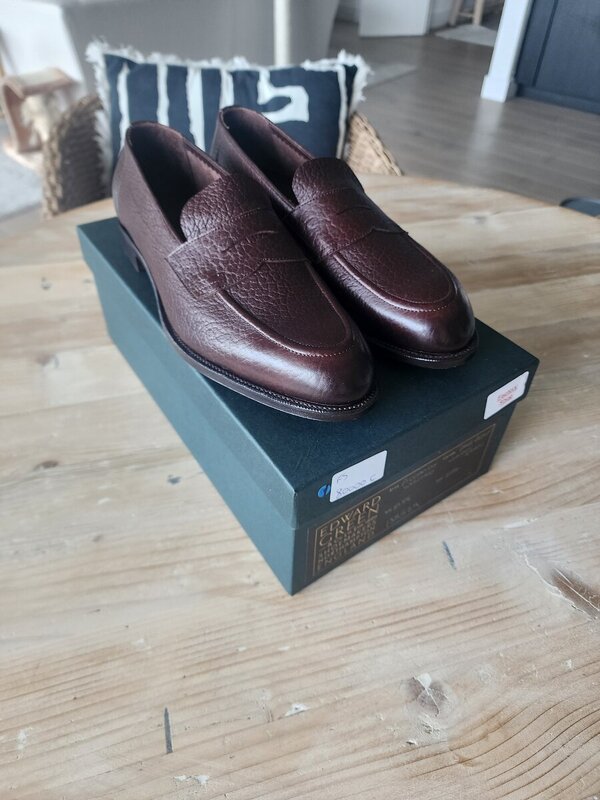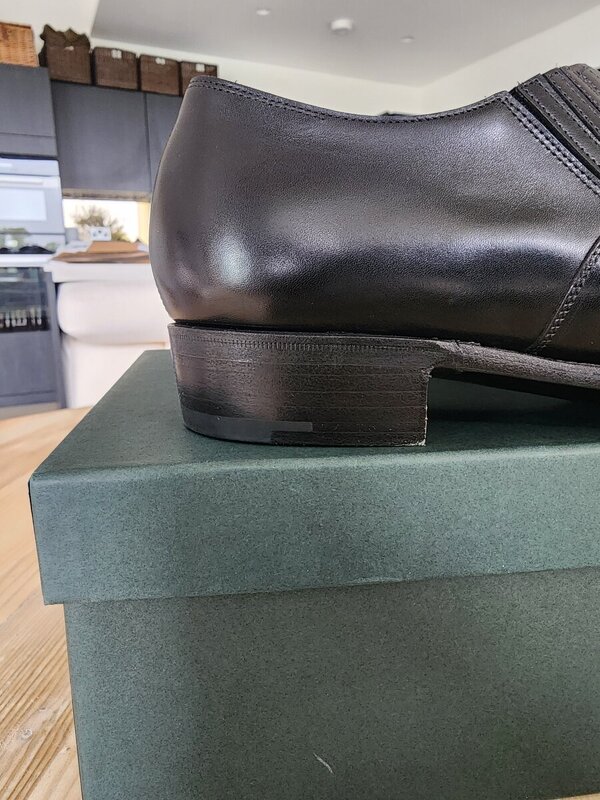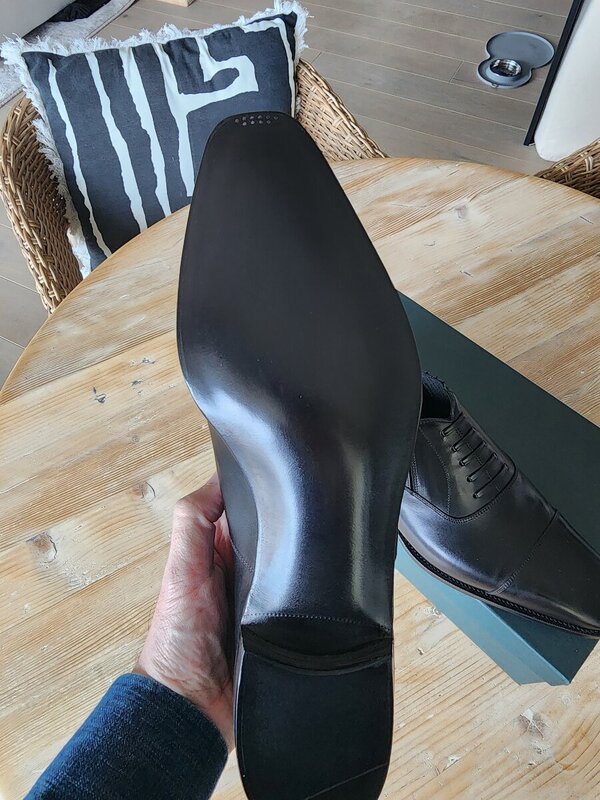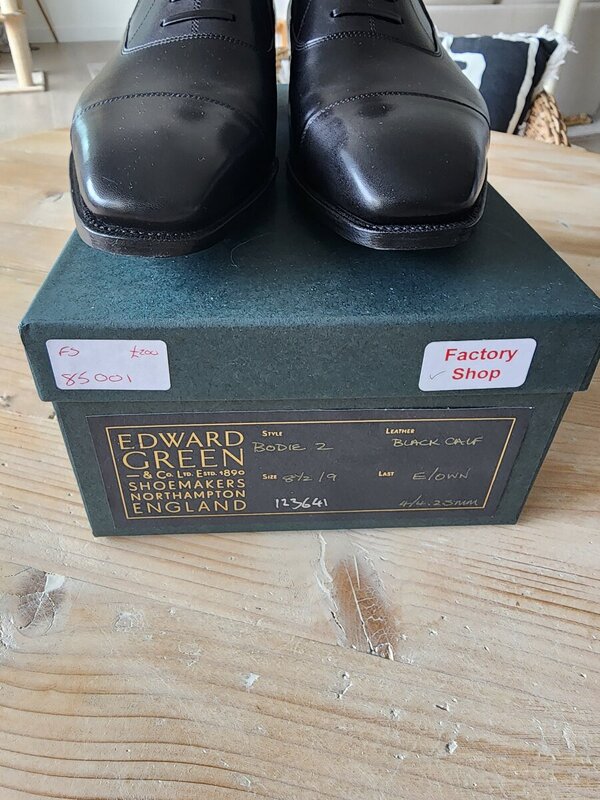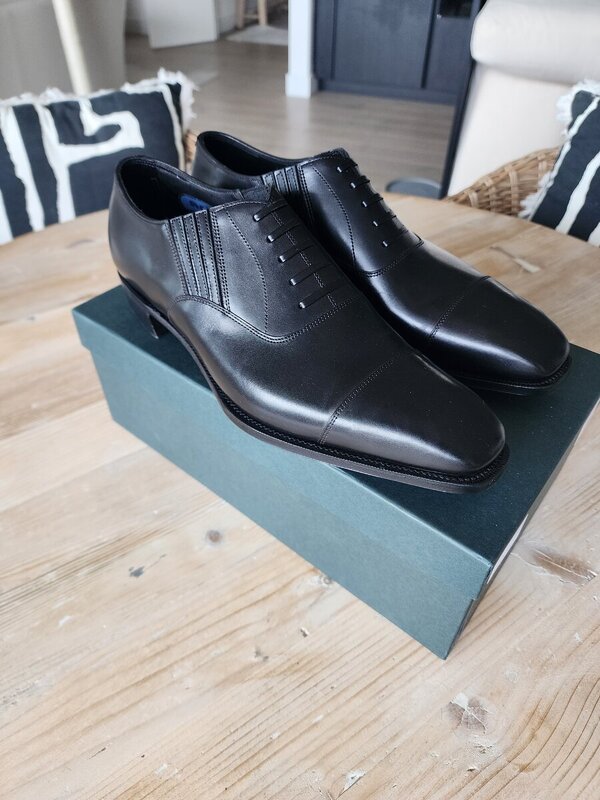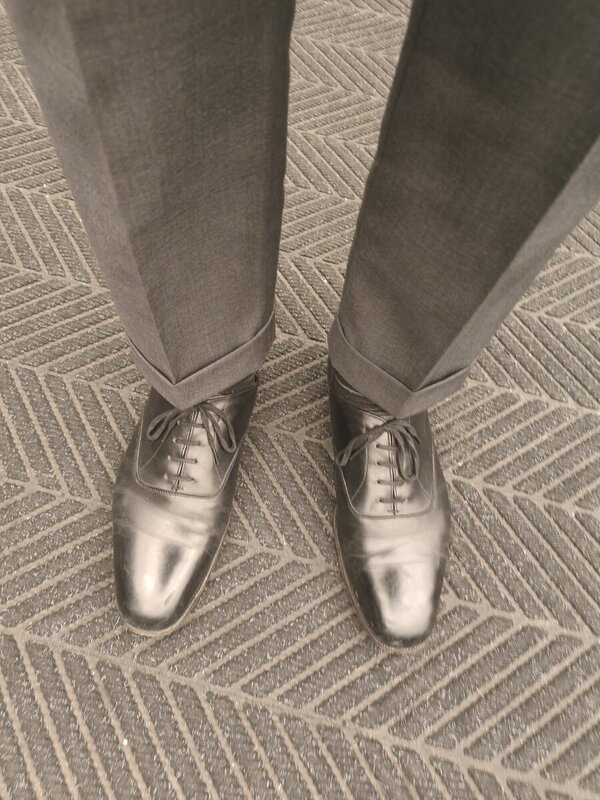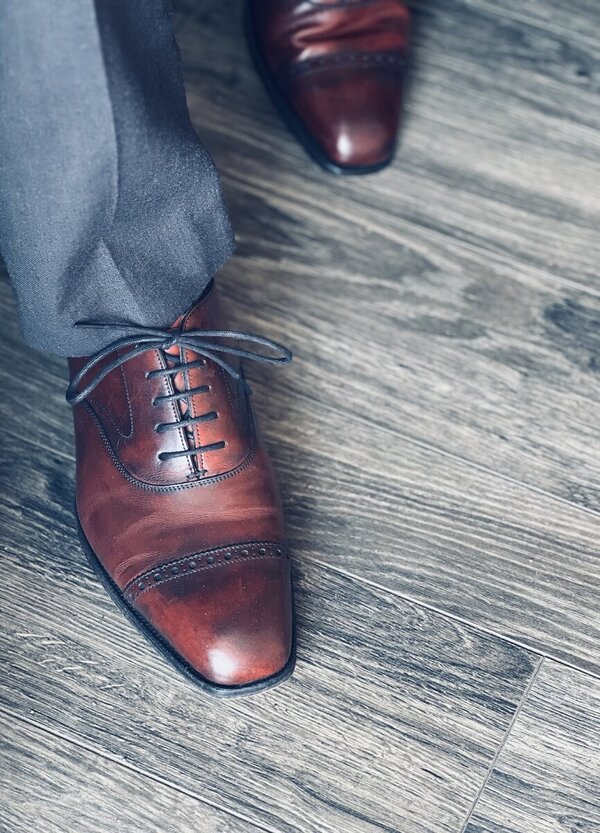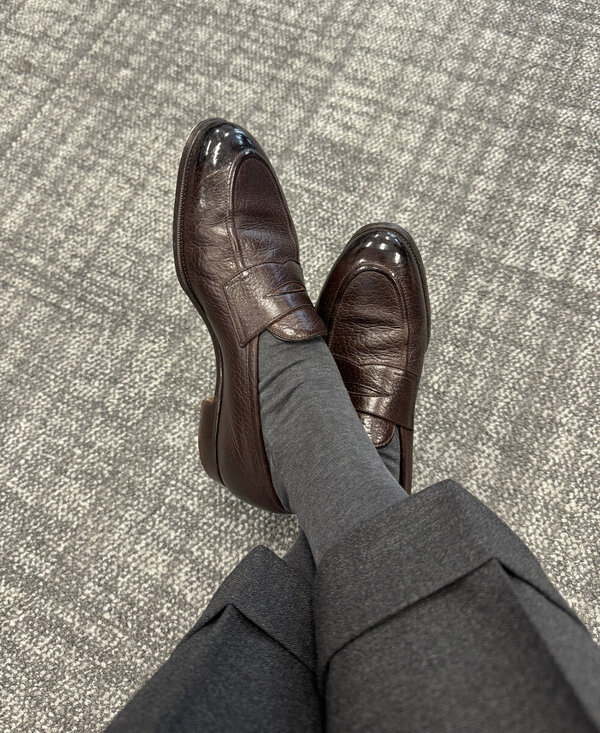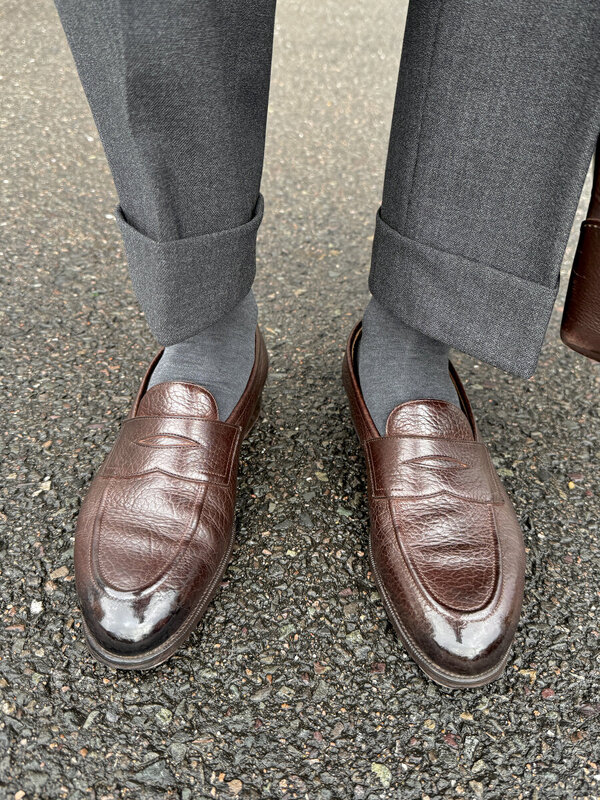reidd
Distinguished Member
- Joined
- Jan 22, 2010
- Messages
- 1,086
- Reaction score
- 1,028
That's fascinating sforum1. I've never seen anything like that. Thanks for the reference.
That twisted last must be exceptionally flexible, to flatten out when its worn.
My salesmen friend knows little about physics. He simply brought this issue to my attention.
Without using lab instruments, we can assess comparative shoe stability using some basic metrics (which given sform1's video may possibly be defied by some ingenious shoe craftsmen).
First, examine your EGs and JLs, hopefully representing a number of lasts from each maker. Now measure the narrowest part of the waist and the widest part of the ball of the sole. Let w = the waist (the narrowest part) of the sole and b = widest part of the sole (where the ball of the foot will lie). Now calculate the ratio: w / b. That's your waist-to-ball of the foot ratio. The closer w/b is to 1, the more evenly distributed will be plantar force exerted on your foot's sole when you take a step, and so the more stable your gait should be when you walk. I believe that for most lasts, you will find the EG w/b ratio is generally closer to 1 compared to JLs.
More specifically, we can actually measure how much pressure is exerted when we walk. Let p = f /a (pressure = force / area). However, because of the irregular shape of the shoe's sole, we have to adjust our calculations accordingly. We need a better measure of the distribution of the plantar force that's exerted when we walk. Let x = (1 - w / b). Given our specification: 0 < x < 1. We can now alter our original equation for pressure thusly: Pressure = (f / a)^x, and as long as x < 1, that should give us a nice decimal root function that is easy to measure and interpret. Therefore, as w/b approaches 1, x approaches 0, and the lower the value of p. A lower p means a reduction in the plantar pressure that's exerted on a specific area of our foot as we walk and the more evenly this pressure should be distributed.
In other words, that beautiful fiddle back waist that we all appreciate, is likely to cause our gait to be less dynamically stable compared to shoes that have wider waists.
Second, we can examine the aspect ratio of the sole relative to the ground, as well as the angle between the ground and highest point of the waist. Again, all things being equal, the greater that angle, the greater the disparity between our sole axis relative to our ankle angle, leading once again to a less stable gait, which is one of the reasons why women in 6 inch pumps have such a hard time walking. Now examine your EGs and JLs. I think you will find the JLs have a greater angle between the ground and waist, which will put greater upward pressure on the medial and lateral arches of the foot. Based on this basic analysis, walking in EGs should exert less plantar pressure on the posteroinferior tuberosity of the calcaneous (the back of the sole), which absorbs most of the pressure exerted when we walk, as well as reducing the pressure upon the 1st and 5th metatarsals at the front of the foot.
In conclusion, there are physical and biokinematic reasons (there are 33 joints in the foot) for my hypothesis that EGs may in fact be more dynamically stable than JLs, but I would have to conduct measurements and systematic analysis of a large sample from each brand to examine this hypothesis to an acceptable level of rigor.
Unsubscribed



